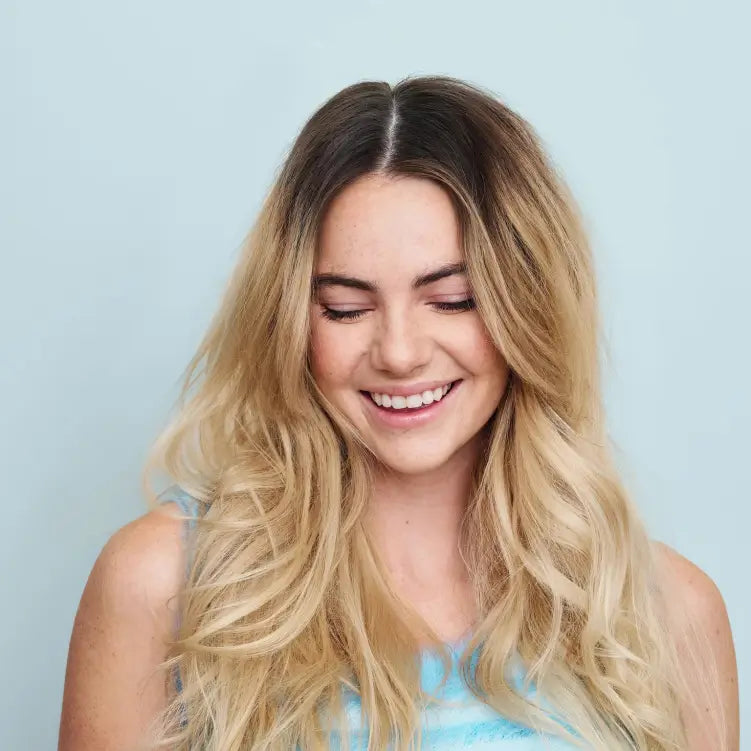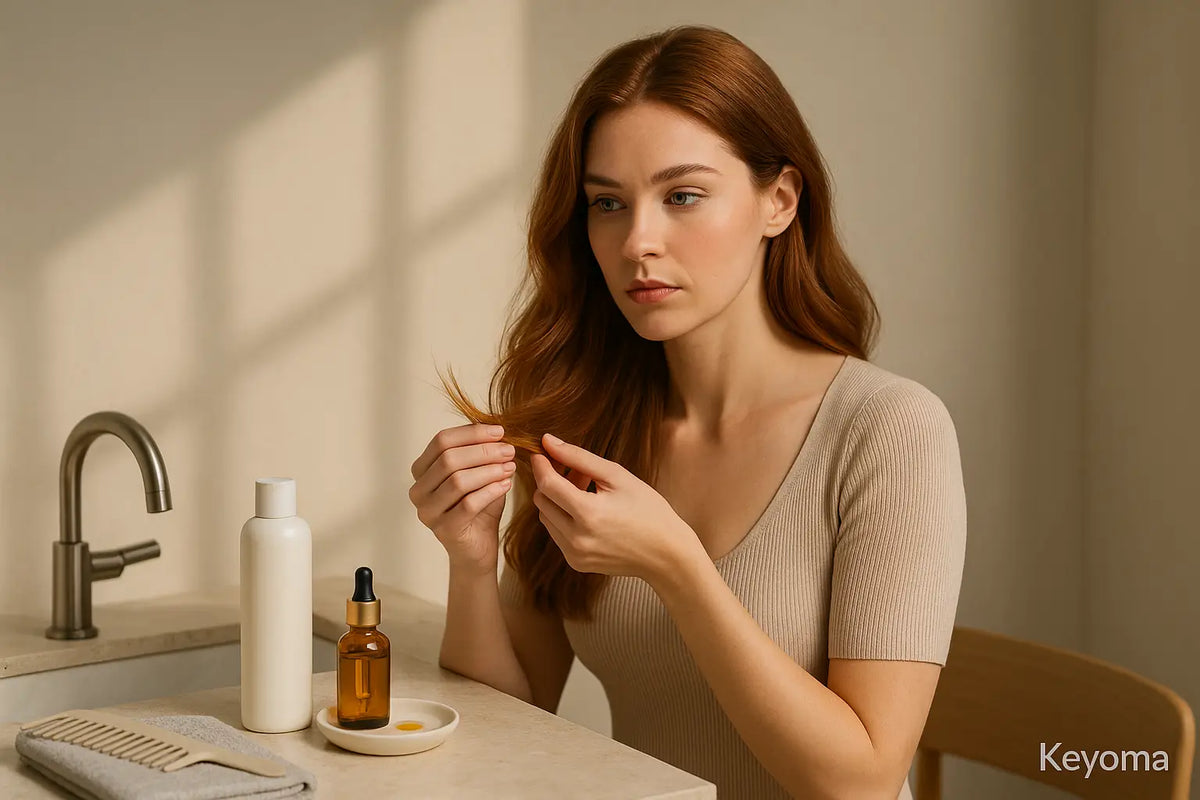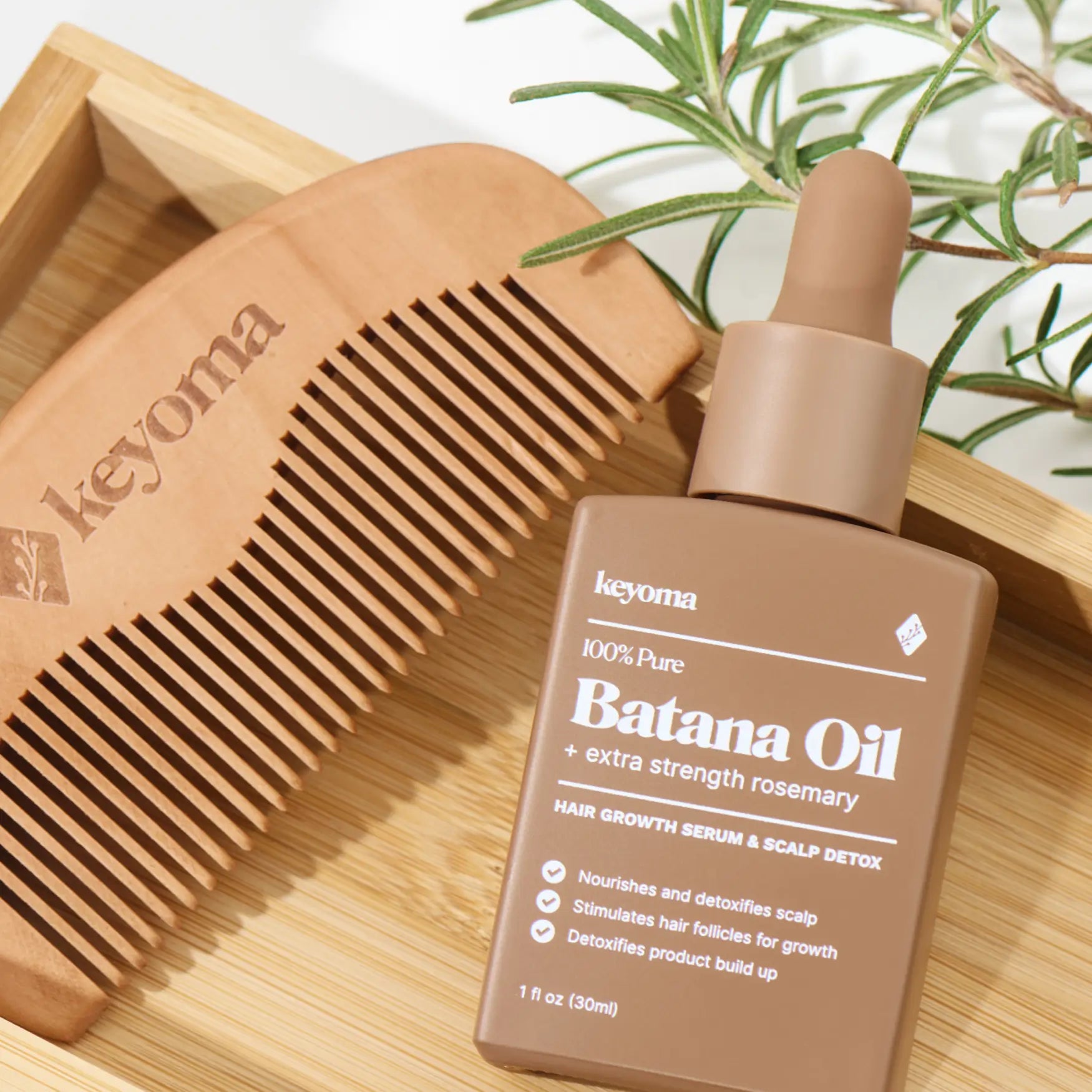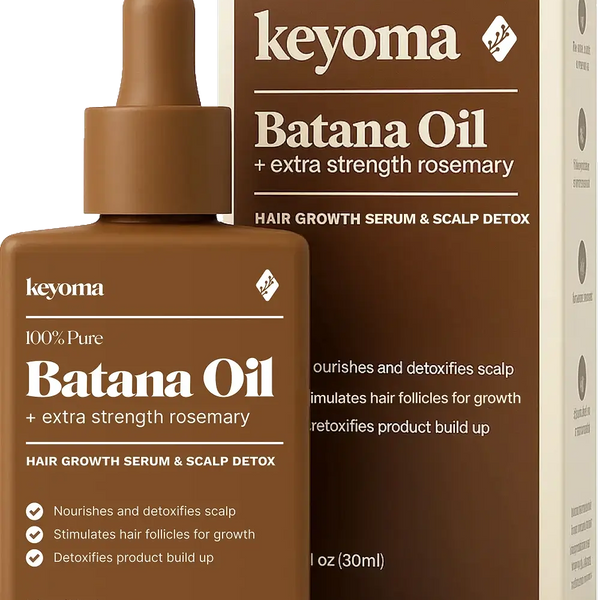In this article
Your body naturally moisturizes your hair through sebaceous (oil) glands in your scalp that release sebum. The sebum coats the scalp first and then moves along each strand to lubricate hair.
Sometimes this natural system does not keep up. You might have underactive oil glands due to genetics or age. Hair type and length can also slow sebum from reaching your ends. Overwashing, frequent styling, and certain treatments may also lead to dry hair.
Once you know your hair type and moisture level, you can treat dry hair at home. Use the tips below to get started and see steady improvements.
Key Takeaways
-
Sebum lubricates hair, but curls and length slow distribution to the ends.
-
Hot water and frequent washing strip oils and make cuticles lose moisture.
-
High or low porosity disrupts moisture balance and increases dryness risk.
-
Clarifying, lighter conditioning, added protein, and sun protection improve hydration steadily.
Why Is My Natural Hair So Dry?
It’s hard to talk about moisturizing hair without noting why hair needs that moisture in the first place. If you’ve been wondering, “Why is my natural hair so dry?,” here’s the breakdown. There are a few reasons why natural hair gets dry.
Curly Hair Is Naturally Dry
Curls grow in a shape that makes it harder for scalp oils to travel down the strand. On straighter hair, those oils move more easily and help keep hair moisturized.
People with curly hair may feel moisturized at the roots but dry from mid-shaft to ends because oils take longer to reach the spiraled lengths.
You’re Washing with Hot Water
Another common reason for dry hair is washing with water that’s too hot. Shampooing with anything hotter than lukewarm water opens the cuticle; it’s like a leaky faucet: any moisture you’ve stored can escape.
If you don’t replace that moisture and then seal it with a natural hair moisturizer, you’ll stay in a cycle of dryness.
Your Hair Porosity Is Really High or Really Low
There’s also the porosity factor. Your hair's porosity is how well it holds moisture. Think of it like fabric. Depending on permeability, moisture can pass through or sit on top. In hair, porosity depends on the cuticle’s condition.
On healthy hair, the cuticle opens to let moisture in and then seals to hold it. A compromised cuticle might not open well, or it opens and struggles to close. If you’re at either extreme, your risk of dry hair is higher.
What Is Hair Moisturizer?
If you’ve ever asked, “How can I hydrate my hair?,” the simple answer is hair moisturizer. Hair moisturizer is to curls what lotion is to skin. Just as skincare humectants draw water to thirsty skin, natural hair care products can do the same for hair.
Natural hair moisturizers appear as oils, serums, creams, butters, and leave-in conditioners. While they offer many benefits, the key is boosting moisture and then locking it in.
How to Moisturize Dry Hair
Adding moisture to dry hair means limiting stressors that contribute to dryness, adjusting your habits, and using hydrating products that nourish your strands. Below are 10 tips to help you fix dry hair, with ideas to try at home.
1. Use Essential Oils
Batana oil has become a popular home remedy for dry hair. Using a few drops on the ends of your hair may give your style a more finished and supple look. Essential oils, like peppermint and lavender oil, may help limit hair loss and reduce breakage.
Mix peppermint oil, lavender oil, and a carrier oil like argan or coconut oil to create a light hair mist that may make your hair feel less dry over time.
You can also apply Keyoma Batana Oil with Rosemary 30 minutes before showering or leave it on overnight if your hair tolerates it.
2. Take Vitamins
You need key vitamins to nourish your body, and some also impact the health of your hair and nails. This includes:
-
vitamin A
-
vitamin B-12
-
vitamin C
-
vitamin D
-
biotin
-
iron
-
zinc
Because prenatal vitamins contain all of the above, some people take them for hair benefits.
It’s also popular to take biotin-only supplements. However, recent research does not strongly support big changes from biotin in most people.
You might also look into marine protein supplements, which have been shown to support healthier hair in some users.
3. Avoid Washing Your Hair Every Day
Shampoo removes dirt and sweat and also strips it of sebum. Sebum is the natural oil that makes hair easier to manage and shiny in the right amount. Too much sebum leads to greasy hair.
But you probably don’t need to strip your hair of sebum every day. You can likely wash every other day and see your hair look healthier.
If you can’t skip daily washing, use a shampoo for dry hair or try a baby shampoo. Both cleanse mildly without removing all of your natural oil.
4. Wrap Your Hair Instead of Air Drying
If your hair feels brittle and hard to style after washing, it may be losing too much moisture while it dries. Instead of air drying, try wrapping hair with a soft cloth or towel.
If you sleep with wet hair, use a silk pillowcase to keep moisture from soaking into your pillows. A 2011 study found that leaving hair wet for long periods caused damage comparable to blow-drying.
5. Add Omega-3s and Antioxidants to Your Diet
Marine proteins can help hair look shinier. To get similar results without a supplement, raise the amount of marine proteins in your diet. This includes:
-
salmon
-
oysters
-
mackerel
-
tuna
-
sardines
These are rich in peptides and omega-3s, which can make hair appear shinier.
You might also eat more antioxidants to counter oxidative stress, which makes hair look older. Foods rich in antioxidants include:
-
walnuts
-
kidney beans
-
blueberries
-
broccoli
-
tomatoes
6. Get a Trim
If your hair feels too dry, it might need a reset with a fresh cut. Even if your hair is not very long, split ends can make hair hard to style and contribute to dryness or a coarse feel.
A stylist can trim unhealthy ends that weigh down fresh growth. You can also ask for tips for your hair type and length. They may suggest a styling routine that prevents damage.
7. Cut Down on Heat Styling
Heat styling to curl, straighten, or add volume might be part of your daily routine. It may also be the reason your hair is drying out.
A 2011 study of hair before and after blow-drying showed significant damage. If you blow-dry, keep the dryer at least 6 inches from your hair for better results.
8. Try Colder Showers
The hot water you use to rinse your body can also scald your hair. Cold showers have some health benefits, and supporting hair moisture could be one of them.
After you shampoo and condition, rinse under cooler water for a minute or two to refresh your scalp and help your strands feel smoother.
9. Prevent Sun Exposure
Ultraviolet rays can damage hair much like they damage skin. If you have dry hair, limit exposure when you can.
Wear a hat for daily activities and avoid long periods in direct sun. If your hair has already been exposed to UV rays, smoothing pure aloe vera gel on your hair might help improve how it feels.
10. Replenish and Seal
Once your strands are clean, a moisturizing conditioner can help replace moisture lost during washing. Stick with a repairing, hydrating conditioner that coordinates with your shampoo.
This is also the time to detangle. Finger combing removes knots with less breakage, and your hands can smooth the cuticle. Don’t forget your edges when you moisturize. Baby hairs can get dry and break as well. Try an anti-breakage spray around your hairline to protect those fragile strands.
Reset Your Moisture Balance This Week
Start with one reset wash. Use a clarifying shampoo once to remove buildup, then condition only your lengths and ends. On the next wash day, switch to a gentle low-poo and keep conditioner brief so your roots stay light. If strands feel soft but weak, add a light protein styler or mask and watch how curl hold improves over two or three days.
Reduce hot water and pause blow-drying when you can. Wrap with a cotton T-shirt to protect moisture while it dries. Track results with simple photos. For routines and product ideas you can use today, explore our blog.
Featured Product
100% Pure Batana Oil + Rosemary









